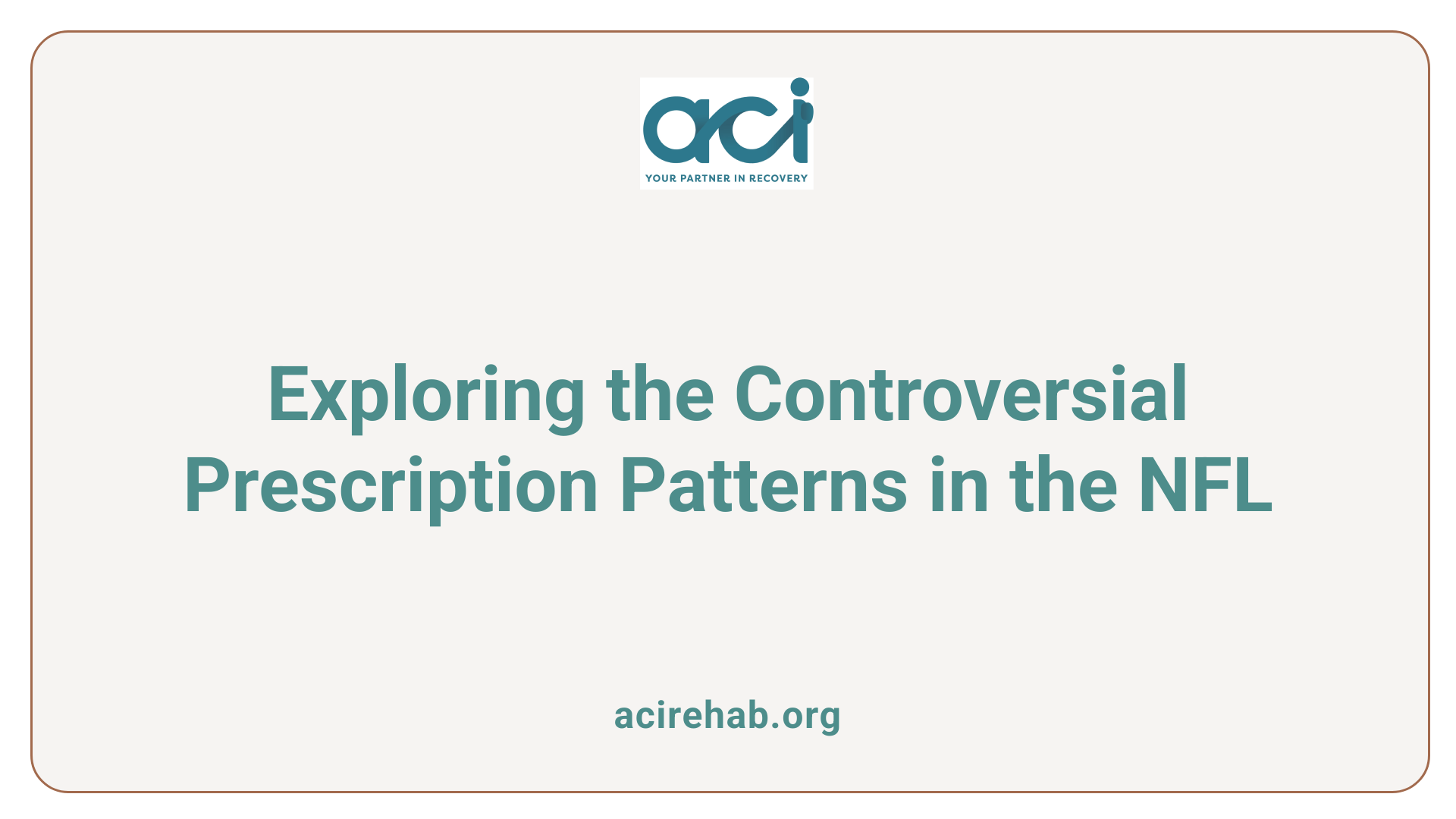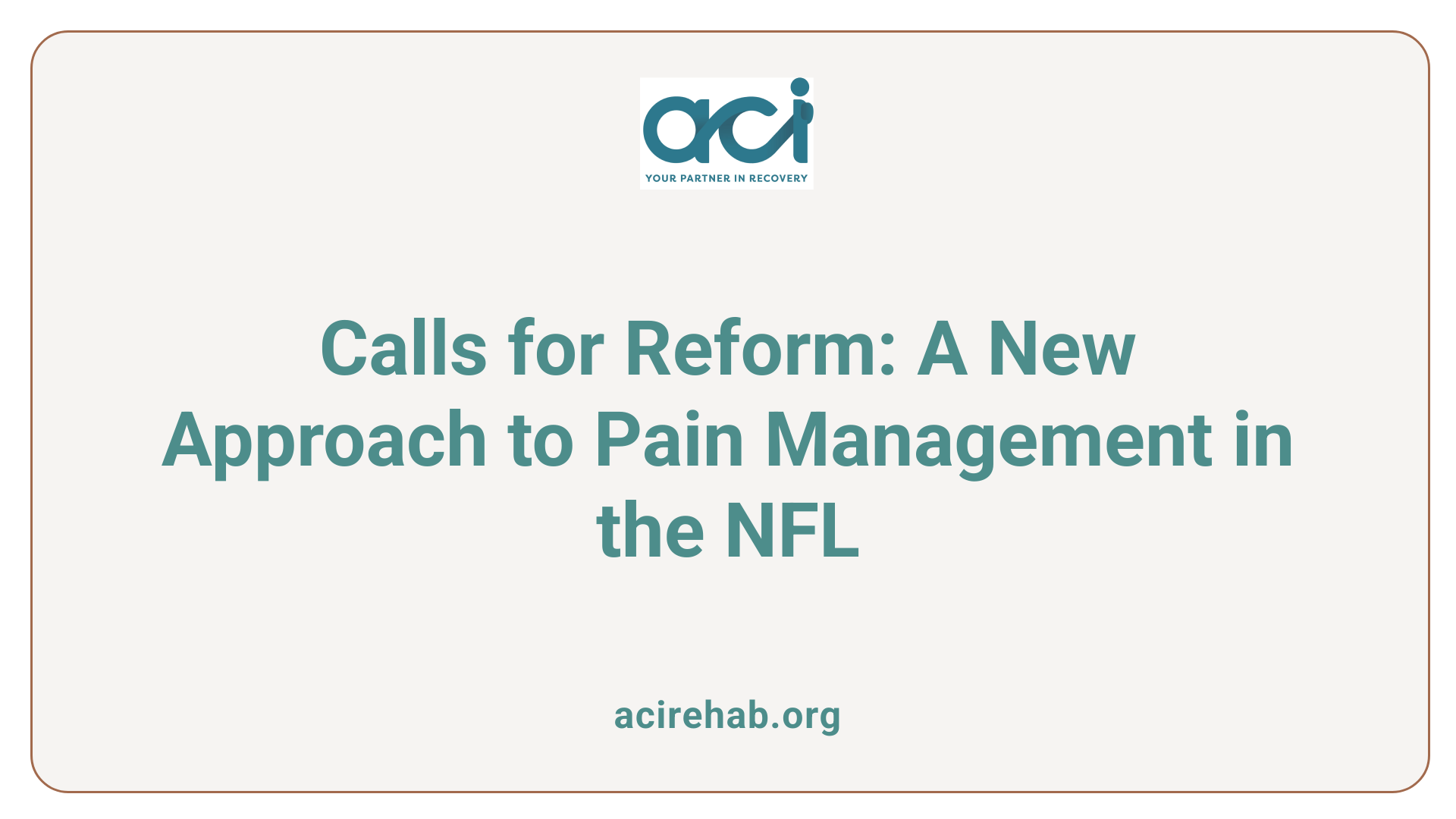Painkillers in the NFL: A Double-Edged Sword
For many years, the NFL has been embroiled in a controversial saga involving the use of painkillers within the league. With allegations of misuse and over-prescription, combined with legal battles and health implications for players, the issue demands extensive examination. This piece explores the complex interplay between pain management and player safety within one of the world’s prominent sports leagues.
The NFL’s Painkiller Prescription Patterns

What is the NFL painkiller lawsuit?
Nearly seven years after a group of former NFL players, including Pro Football Hall of Famer Richard Dent, sued the league over an alleged overuse and abuse of prescription pain pills, the case finally gained approval from a federal judge who also scheduled deadlines for class certification arguments.
Legal allegations of painkiller misuse
The lawsuit claims that NFL teams routinely ignored federal regulations governing the handling of narcotics and pain medications. Over 1,800 former players alleged negligence, asserting they were often given drugs like Vicodin and Toradol without adequate informed consent or consideration of health risks. It is reported that in 2012 alone, NFL teams prescribed around 8,000 doses of anti-inflammatories and narcotics.
Implications on player health and safety
This environment may have contributed to widespread addiction issues among former players, as research suggests they misuse painkillers at nearly three times the rate of similar-aged men. Many reported severe health consequences stemming from this misuse, ranging from kidney failure to permanent nerve damage.
Lawsuits involving former players
The history of these lawsuits shows a pattern of players attempting to address these issues legally. However, federal judges have often dismissed these cases, citing the collective bargaining agreements as a limiting factor, making the path to legal recourse challenging despite ongoing health concerns.
Inside the Drugs: What Do NFL Players Use for Pain Relief?
What do they give NFL players for pain?
NFL players routinely receive Ketorolac tromethamine, commonly known as Toradol, for managing pain, particularly for injuries related to muscles and joints. This powerful non-steroidal anti-inflammatory drug (NSAID) is favored for its ability to alleviate both pain and inflammation quickly.
The NFL Team Physician Society has established guidelines to ensure its use is carefully managed. Recommendations include administering Toradol only under the close supervision of a team physician. Importantly, the use of Toradol is discouraged for preventive purposes; guidance advocates for using the lowest effective dose over short durations, typically no more than five days. This cautious approach aims to mitigate safety concerns, especially among players with pre-existing conditions such as gastrointestinal issues or kidney problems.
NFL’s guidelines on painkiller use
Despite the existence of guidelines, the NFL has faced scrutiny over how these protocols are implemented. Historically, players have reported receiving medication without adequate information about risks or proper oversight from medical staff. With reports of excessive prescriptions, the league recognizes the need for better standardization in pain management practices.
Medical staff roles
The NFL’s medical personnel, including team doctors and trainers, are pivotal in managing players’ pain. However, many former players claim these staff members sometimes prioritize team performance over player health. Allegations include administering narcotics inappropriately, raising ethical questions about medical responsibilities.
The systemic issues highlighted by lawsuits from former players underscore the necessity for ongoing improvements in player care, especially regarding pain management practices within the NFL.
The Allure of Toradol: Why Athletes Depend on It
Why do athletes use Toradol?
Athletes use Toradol (ketorolac) primarily for its effectiveness in managing acute musculoskeletal pain, which is common in competitive sports. A significant survey indicated that about 49% of physicians administer intramuscular ketorolac to athletes, with a remarkable 95.8% reporting effective pain control following its use. The drug is typically administered within six hours before athletic events to ensure immediate pain relief.
Effects and risks of Toradol
Although there are some risks associated with ketorolac, such as a 2.9% incidence of bleeding complications and 1.9% for kidney issues, the relatively low rate of adverse reactions makes it a popular choice among healthcare providers in sports medicine. This rapid action provides athletes with the ability to perform despite pain and injuries, contributing to its appeal. However, the long-term effects of frequent use can lead to serious health risks, including potential kidney damage and other complications.
NFL’s policy on Toradol use
The NFL has implemented policies to regulate painkiller use, emphasizing medical supervision. Still, past practices have shown a concerning trend of using Toradol for pain management, sometimes without proper adherence to safety guidelines. Even as there are recommendations against preventive use of Toradol to manage pain daily, many players report its administration before games, raising ethical questions about prioritizing performance over long-term health.
Current Practices: Is Toradol Still Common in the NFL?
Do NFL players still take Toradol?
Yes, NFL players still take Toradol, particularly in the form of injections to manage pain from injuries on game day. This nonsteroidal anti-inflammatory medication is often administered about an hour before games for its quick pain relief properties. While many players feel its necessity to play through injuries, there are growing concerns about the drug’s long-term risks, including gastrointestinal issues and potential blood-thinning effects.
What are player attitudes towards Toradol?
Despite the known risks, the culture within the NFL often compels players to prioritize immediate performance over long-term health. A survey indicated a significant number of players remain unconcerned about the potential long-term impacts of using Toradol. Former players have described a pressure to remain playing, sometimes leading to painkiller use nearly being normalized within the sport.
What are the health implications?
While the NFL actively monitors the administration of Toradol and has implemented educational initiatives regarding its risks, the implications of widespread use still loom large. Players’ reliance on pain relief can mask serious injuries, leading to potentially aggravated conditions over time. This raises broader health concerns, especially considering the league’s history of pain management practices that may disregard players’ long-term wellness.
Legal and Ethical Boundaries: Challenges Facing the NFL

Federal laws on painkiller distribution
The NFL faces significant scrutiny over its approach to pain management, particularly regarding the distribution of narcotics and anti-inflammatory medications. Federal laws govern the handling of prescription drugs; however, it has been reported that NFL teams frequently violated these regulations. Evidence suggests a culture where players were administered powerful painkillers without appropriate prescriptions, leading to possible illegal practices.
DEA investigations into NFL teams
In light of allegations from former players, the Drug Enforcement Administration (DEA) has initiated surprise inspections of several NFL teams. Investigators aim to examine the adherence to proper prescription protocols, storage, and distribution of controlled substances. Concerns raised include inadequate documentation and the potential for widespread misuse of painkillers, comparable to distributing ‘Halloween candy’. These investigations reflect a broader inquiry into the league’s drug practices amid growing accusations.
Ethical considerations in pain management
The ethical landscape for team physicians is complex, balancing the immediate need to address players’ pain with the imperative to safeguard their long-term health. Reports indicate that medical staff often prioritized keeping players on the field over ensuring informed consent about the risks associated with pain medications. Such practices have raised alarms about the potential for addiction and serious health consequences, reflecting a systemic issue in how player welfare is managed.
Impacts on Player Health: Short and Long-term Effects

Health Consequences of Painkiller Use
The use of painkillers in the NFL has raised significant concerns regarding both immediate and chronic health issues for players. Pain medications, particularly narcotics and anti-inflammatories, have been consistently prescribed, often without proper medical oversight. This has led to acute medical issues such as organ damage and renal failure, as seen in several former players’ experiences. Complications can stem from medications like Toradol, known for its potential long-term effects when misused.
Addiction and Dependency Risks
Over reliance on painkillers can lead to serious addiction problems. Research indicates that retired NFL players misuse opioid pain medications at a rate over four times higher than the general population. This misuse is often exacerbated by a culture pressuring players to perform despite injuries, thus fostering dependency on these drugs as a means to manage pain and continue participating in games.
Player Experiences with Health Issues
Former NFL players have reported alarming health consequences related to painkiller use. For instance, Ray Lucas openly discussed his addiction, noting he consumed up to 800 pills a month. Others, like Jeremy Newberry, faced life-altering conditions such as permanent nerve damage. Their accounts underscore a critical need for improved practices surrounding pain management to prioritize long-term player health over immediate performance.
The Cultural Dynamics of Pain Management in the NFL

Team Culture Around Pain Management
The NFL’s culture surrounding pain management often emphasizes performance over health, creating an environment where players feel compelled to play through pain. This mindset is exacerbated by teams pushing for competitive advantages through aggressive pain management strategies. For example, reports indicate that players are sometimes administered powerful painkillers without appropriate oversight, creating a scenario where medication is utilized to ensure that athletes remain on the field.
Pressure and Performance Expectations
The substantial pressure for athletes to perform can lead to a reliance on narcotics and anti-inflammatories, with players often describing a culture where skipping games is seen as a weakness. In 2012, an average of nearly 8,000 doses of medications were distributed across teams, underscoring the extent to which painkillers like Toradol are used as means to manage injury rather than to properly address them.
Player Trust in Medical Staff
Trust in the medical staff varies significantly among players. A survey revealed that a significant percentage of retired players feel they cannot trust team physicians, with many citing instances of being inadequately informed about the risks associated with pain medications. This mistrust highlights a critical gap in player safety protocols, as athletes question whether their long-term health is prioritized over their immediate ability to compete.
| Aspect | Insight | Source |
|---|---|---|
| Team Dynamics | Culture prioritizes performance over health | Various player reports |
| Painkiller Distribution | 8000+ doses dispensed across teams in 2012 | Lawsuit and health studies |
| Trust in Medical Staff | 78% of players lack trust in team physicians | Poll by NFLPA |
Turning a New Leaf: Calls for Change

Proposals for better pain management practices
To combat the pervasive issue of painkiller misuse within the NFL, stakeholders advocate for more stringent guidelines on medication administration. Suggestions include creating a centralized system for monitoring prescriptions, mandating informed consent for all treatments, and reinforcing educational programs that inform players about the risks associated with pain medications.
Legal relief for players
Players continue to seek legal avenues to address the health issues stemming from improper medication practices. Recent rulings indicate that collective bargaining agreements (CBAs) hinder federal lawsuits, emphasizing an urgent need for reforms in the NFL’s legal frameworks. The pursuit of punitive damages aims to hold NFL teams accountable while promoting systemic changes.
Joint NFL-NFLPA initiatives
Collaborative efforts between the NFL and the NFL Players Association (NFLPA) focus on developing comprehensive pain management protocols. These initiatives aim to enhance player safety through regulated drug use and improved medical monitoring. By working together, both parties hope to reshape the sports culture and prioritize athlete well-being over competitive pressures.
The Road Ahead for Pain Management in the NFL
The ongoing controversy surrounding painkiller practices in the NFL underscores the need for a transformative approach to player health and well-being. While significant strides have been made in acknowledging the issue, the league and its medical staff must continue to enhance their policies, aiming to balance performance with safety. As investigations and lawsuits persist, the NFL faces challenges not just in legal arenas, but in rebuilding trust with its players, ensuring that pain management practices serve both immediate and long-term health goals.
References
- Lawsuit alleges that NFL teams gave painkillers recklessly – CNN
- Painkillers, the NFL’s other big problem – ESPN
- NFL abuse of painkillers and other drugs described in court filings
- NFL teams violated federal laws regarding prescription painkillers
- The Dark Side Of The NFL: Painkiller Practices
- NFL dodges liability over painkiller culture claimed by former players
- Just how serious is the federal investigation into NFL painkiller abuse

